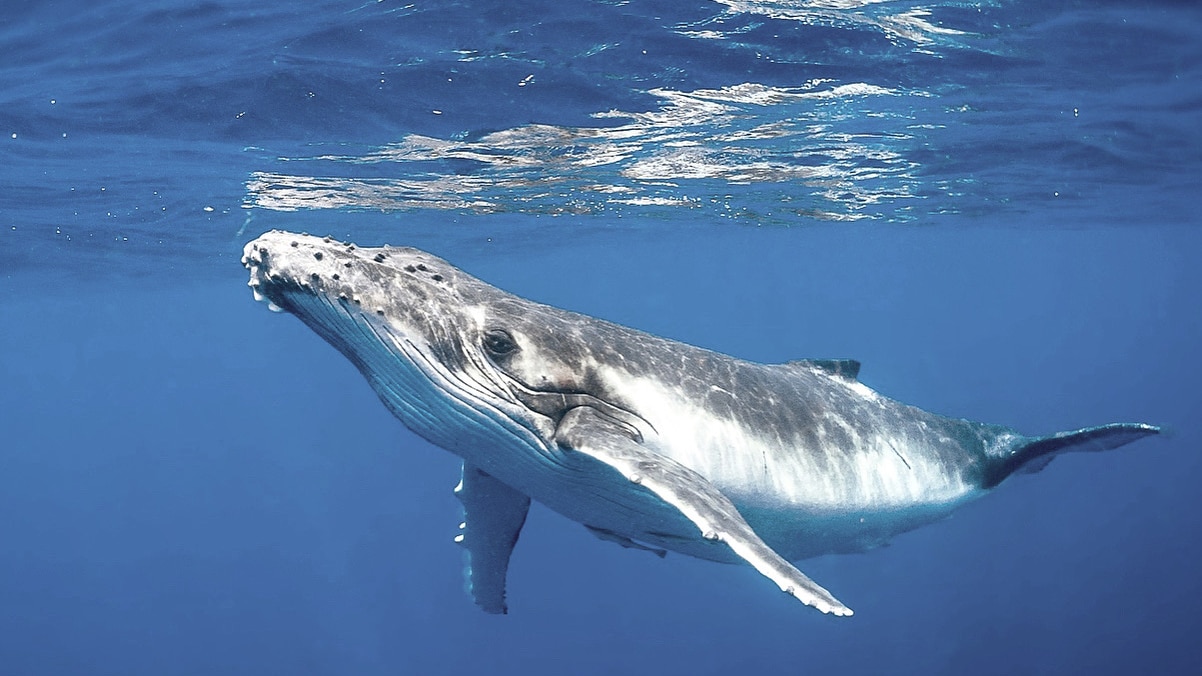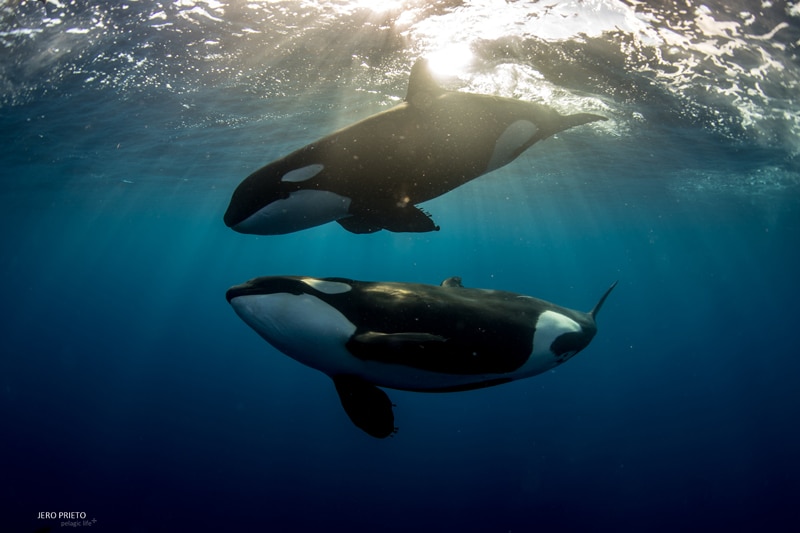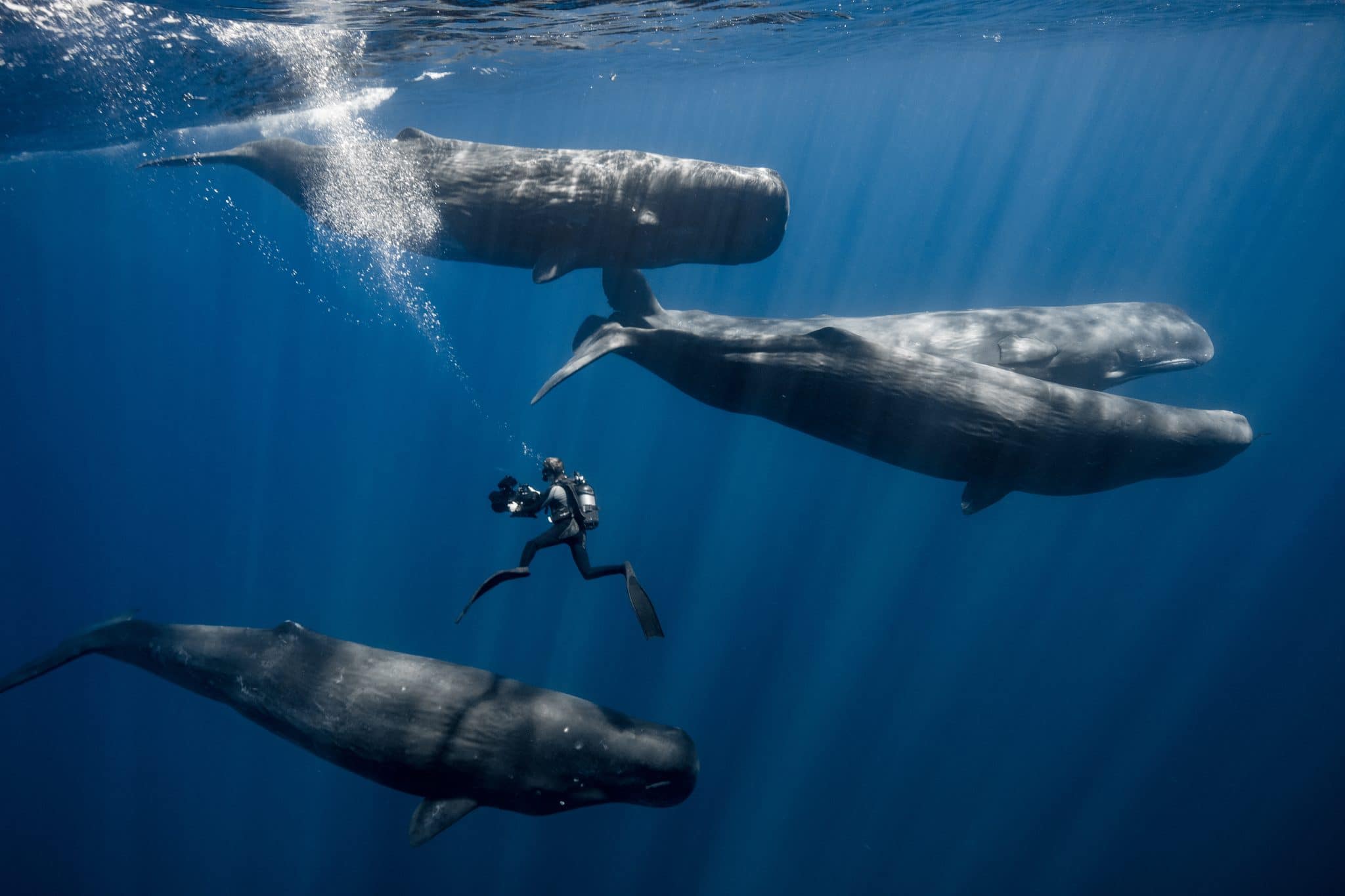Marine Life & Conservation Blogs
Six Tips on How to Help Save the Whales: Whales Need Your Help!

A guest blog from PADI to mark World Whale Day
Thanks to the brutal practice of whaling over the last century, whales are still recovering from plummeting populations: nearly three million whales were killed. Today, whales (and their dolphin cousins) face constant threats from entanglements in fishing gear, ship strikes, noise, pollution, and habitat loss. Further, plastic particles outnumber plankton in many of their key feeding grounds.
Researchers from Harvard University have determined that whales’ feeding habits actually “fertilize” phytoplankton, which in turn provides half the world’s oxygen, scientific evidence that firmly links healthy whale populations to the fight against climate change.
Whether you love whales, or not – it’s critical to protect them. Healthy whale populations play a vital role in our world’s largest and most important ecosystem – an ecosystem that provides more oxygen than all the rainforests combined is our best defence against rising CO2 levels, and provides more than ⅕ of the world’s population with food.
By protecting whales and their habitats, we are protecting… ourselves. So here’s a few easy tips from PADI on how you can take action
1. Go Plastic Free
At least 8 million tons of plastic end up in our oceans every year and more than 250 million tons of plastic are estimated to cloudy our waters by 2025. It’s difficult to wrap our heads around how much plastic that really is and even harder to stomach (pun intended) how much of this debris ends up ingested by whales and other marine creatures, usually resulting in death-by-starvation. It is one of biggest threats to all whales and dolphins occurring throughout the world’s oceans.
2. Clean up Your Act
According to the United Nations Environment Program, 8 million pieces of marine debris enter the ocean every single day. This equates to 6.4 million tons of trash each year. The majority of marine litter enters the ocean from land. So recycle whatever you can, pick up trash you find, and avoid letting balloons go.
Why not take a few hours out on a Saturday to plan a local beach clean up. Disposing of your trash responsibly and picking up other trash near waterways is a simple and effective way to help protect whales and dolphins.
3. Become a Diver; Then Dive with a Purpose
Becoming a scuba diver opens up a whole new world to you – and connects you to a global community of passionate ocean advocates. Not only can you actually enter the whale’s home and maybe – just maybe if you are lucky enough – come eye to eye with one, but you’ll also be able to take meaningful action to save them.
After you receive your open water diving certificate, you can support local communities in their protection areas through dive tourism, engage in citizen science efforts to restore the whales home (like planting corals!), get a “Whale Warrior” distinctive specialty, or even participate in a Dive Against Debris and submit a survey every time you dive. For almost three decades, divers have been partners in the fight against marine debris. Divers are adding the unique underwater perspective to this global crisis through the AWARE Dive Against Debris® citizen science program and collecting evidence to inform measures that can stop the problem at the source.
4. Support Responsible Whale Tourism
When we see something, we care about it more. So whether you book a whale watching tour, a swim with the whales journey, or encounter them during a dive trip in whale hot spots, your passion for protecting them and educating others to do the same will increase ten-fold! Your first whale encounter will make you a whale advocate for life–and you can do so with PADI Centers all over the world. It also ensures that whales are protected around the world – thanks to the tourism impact upon local economies.
5. Use Your Words, Your Wallet and/or Your Time to Make a Difference!
Making a difference can be as simple as your signature – ensuring local legislation protects endangered sea creatures and their homes. Many conservation groups rely on your help to advocate for their protection. Sign petitions or write letters to elected officials to increase protections for whales and dolphins. And if you have more time, consider volunteering. Finally, If you can afford it, support an organisation you trust by donating or even adopting a whale of your own!
6. Be a Spokesperson On Land with Whale Gear: Proceeds Protect the Whales
You can score amazing gear that celebrates and also supports whale conservation. Start meaningful conversations, shop sustainably and donate to their protection – all at once. Check out PADI Gear’s Whale Collection – with proceeds going directly towards helping to save the whales.
Header Image: Jay Clue, Dive Ninja Expeditions
Marine Life & Conservation Blogs
Creature Feature: Dusky Shark

 In this series, the Shark Trust will be sharing amazing facts about different species of sharks and what you can do to help protect them.
In this series, the Shark Trust will be sharing amazing facts about different species of sharks and what you can do to help protect them.
This month we’re taking a look at the Dusky Shark, a highly migratory species with a particularly slow growth rate and late age at maturity.
Dusky sharks are one of the largest species within the Carcharhinus genus, generally measuring 3 metres total length but able to reach up to 4.2 metres. They are grey to grey-brown on their dorsal side and their fins usually have dusky margins, with the darkest tips on the caudal fin.
Dusky Sharks can often be confused with other species of the Carcharhinus genus, particularly the Galapagos Shark (Carcharhinus galapagensis). They have very similar external morphology, so it can be easier to ID to species level by taking location into account as the two species occupy very different ecological niches – Galapagos Sharks prefer offshore seamounts and islets, whilst duskies prefer continental margins.
Hybridisation:
A 2019 study found that Dusky Sharks are hybridising with Galapagos Sharks on the Eastern Tropical Pacific (Pazmiño et al., 2019). Hybridisation is when an animal breeds with an individual of another species to produce offspring (a hybrid). Hybrids are often infertile, but this study found that the hybrids were able to produce second generation hybrids!
Long distance swimmers:
Dusky sharks are highly mobile species, undertaking long migrations to stay in warm waters throughout the winter. In the Northern Hemisphere, they head towards the poles in the summer and return southwards towards the equator in winter. The longest distance recorded was 2000 nautical miles!
Very slow to mature and reproduce:
The Dusky Shark are both targeted and caught as bycatch globally. We already know that elasmobranchs are inherently slow reproducers which means that they are heavily impacted by overfishing; it takes them so long to recover that they cannot keep up with the rate at which they are being fished. Dusky Sharks are particularly slow to reproduce – females are only ready to start breeding at roughly 20 years old, their gestation periods can last up to 22 months, and they only give birth every two to three years. This makes duskies one of the most vulnerable of all shark species.
The Dusky Shark is now listed on Appendix II of the Convention on the Conservation of Migratory Species (CMS), but further action is required to protect this important species.
Scientific Name: Carcharhinus obscurus
Family: Carcharhinidae
Maximum Size: 420cm (Total Length)
Diet: Bony fishes, cephalopods, can also eat crustaceans, and small sharks, skates and rays
Distribution: Patchy distribution in tropical and warm temperate seas; Atlantic, Indo-Pacific and Mediterranean.
Habitat: Ranges from inshore waters out to the edge of the continental shelf.
Conservation status: Endangered.
For more great shark information and conservation visit the Shark Trust Website
Images: Andy Murch
Diana A. Pazmiño, Lynne van Herderden, Colin A. Simpfendorfer, Claudia Junge, Stephen C. Donnellan, E. Mauricio Hoyos-Padilla, Clinton A.J. Duffy, Charlie Huveneers, Bronwyn M. Gillanders, Paul A. Butcher, Gregory E. Maes. (2019). Introgressive hybridisation between two widespread sharks in the east Pacific region, Molecular Phylogenetics and Evolution 136(119-127), https://doi.org/10.1016/j.ympev.2019.04.013.
Marine Life & Conservation Blogs
Creature Feature: Undulate Ray

 In this series, the Shark Trust will be sharing amazing facts about different species of sharks and what you can do to help protect them.
In this series, the Shark Trust will be sharing amazing facts about different species of sharks and what you can do to help protect them.
This month we’re looking at the Undulate Ray. Easily identified by its beautiful, ornate pattern, the Undulate Ray gets its name from the undulating patterns of lines and spots on its dorsal side.
This skate is usually found on sandy or muddy sea floors, down to about 200 m deep, although it is more commonly found shallower. They can grow up to 90 cm total length. Depending on the size of the individual, their diet can range from shrimps to crabs.
Although sometimes called the Undulate Ray, this is actually a species of skate, meaning that, as all true skates do, they lay eggs. The eggs are contained in keratin eggcases – the same material that our hair and nails are made up of! These eggcases are also commonly called mermaid’s purses and can be found washed up on beaches all around the UK. If you find one, be sure to take a picture and upload your find to the Great Eggcase Hunt – the Shark Trust’s flagship citizen science project.
It is worth noting that on the south coasts, these eggcases can be confused with those of the Spotted Ray, especially as they look very similar and the ranges overlap, so we sometimes informally refer to them as ‘Spundulates’.
Scientific Name: Raja undulata
Family: Rajidae
Maximum Size: 90cm (total length)
Diet: shrimps and crabs
Distribution: found around the eastern Atlantic and in the Mediterranean Sea.
Habitat: shelf waters down to 200m deep.
Conservation Status : As a commercially exploited species, the Undulate Ray is a recovering species in some areas. The good thing is that they have some of the most comprehensive management measures of almost any elasmobranch species, with both minimum and maximum landing sizes as well as a closed season. Additionally, targeting is entirely prohibited in some areas. They are also often caught as bycatch in various fisheries – in some areas they can be landed whilst in others they must be discarded.
IUCN Red List Status: Endangered
For more great shark information and conservation visit the Shark Trust Website
Image Credits: Banner – Sheila Openshaw; Illustration – Marc Dando
-

 News3 months ago
News3 months agoHone your underwater photography skills with Alphamarine Photography at Red Sea Diving Safari in March
-

 News3 months ago
News3 months agoCapturing Critters in Lembeh Underwater Photography Workshop 2024: Event Roundup
-

 Marine Life & Conservation Blogs3 months ago
Marine Life & Conservation Blogs3 months agoCreature Feature: Swell Sharks
-

 Blogs2 months ago
Blogs2 months agoMurex Resorts: Passport to Paradise!
-

 Blogs2 months ago
Blogs2 months agoDiver Discovering Whale Skeletons Beneath Ice Judged World’s Best Underwater Photograph
-

 Gear Reviews3 weeks ago
Gear Reviews3 weeks agoGEAR REVIEW – Revolutionising Diving Comfort: The Sharkskin T2 Chillproof Suit
-

 Marine Life & Conservation2 months ago
Marine Life & Conservation2 months agoSave the Manatee Club launches brand new webcams at Silver Springs State Park, Florida
-

 Gear Reviews3 months ago
Gear Reviews3 months agoGear Review: Oceanic+ Dive Housing for iPhone

























